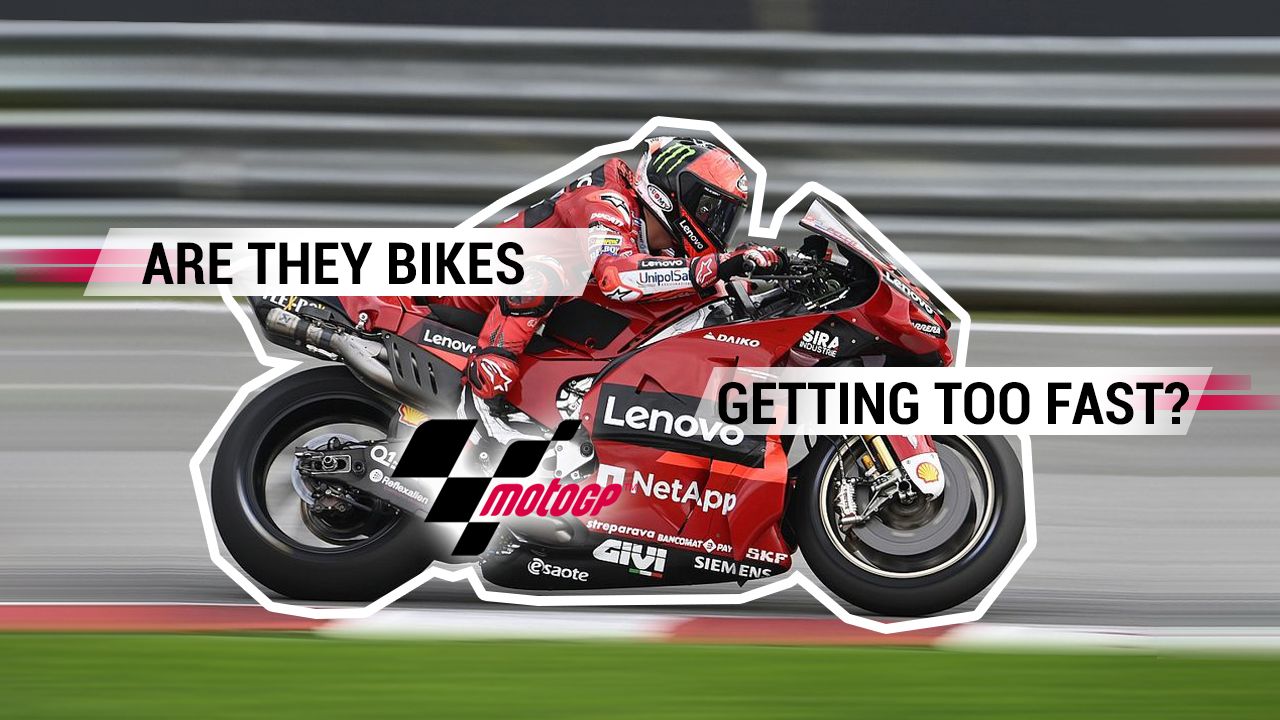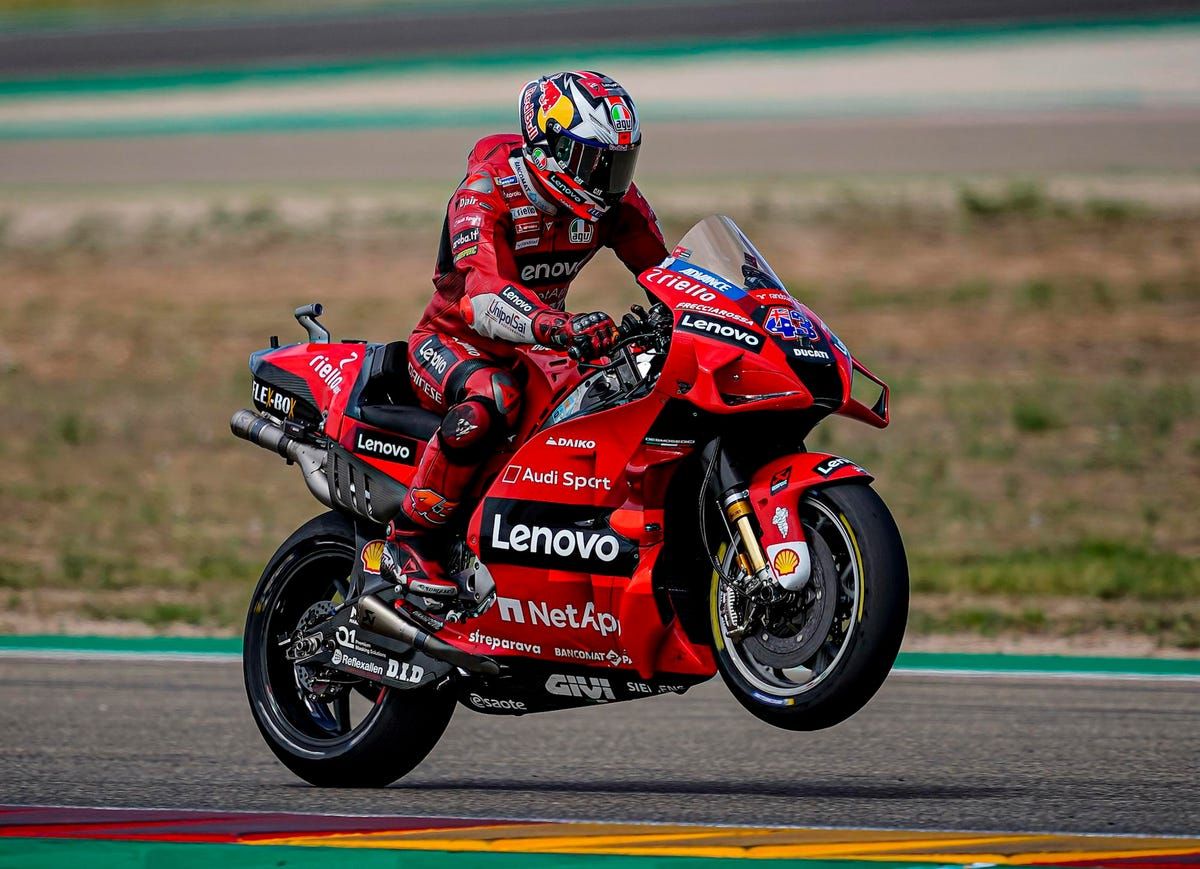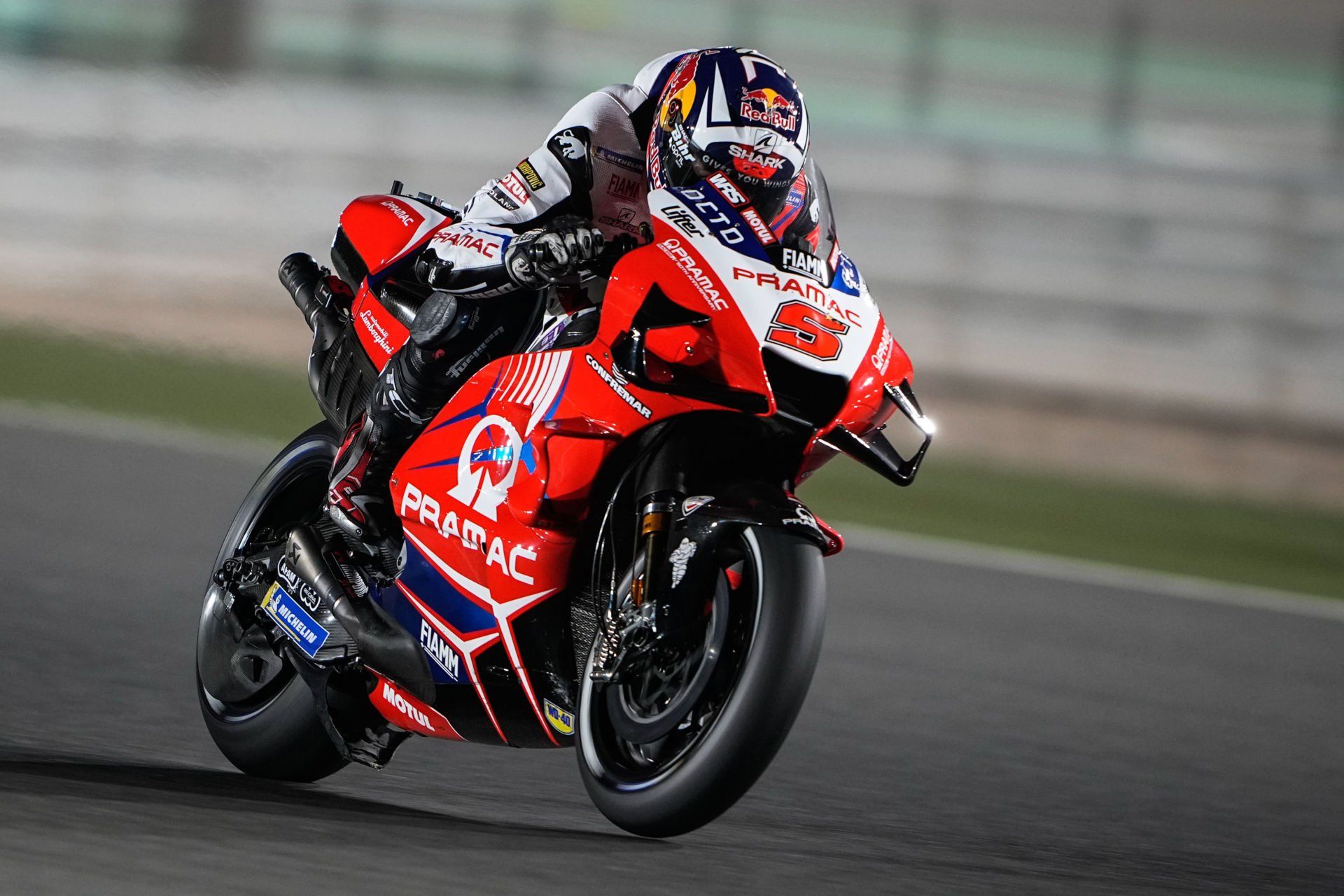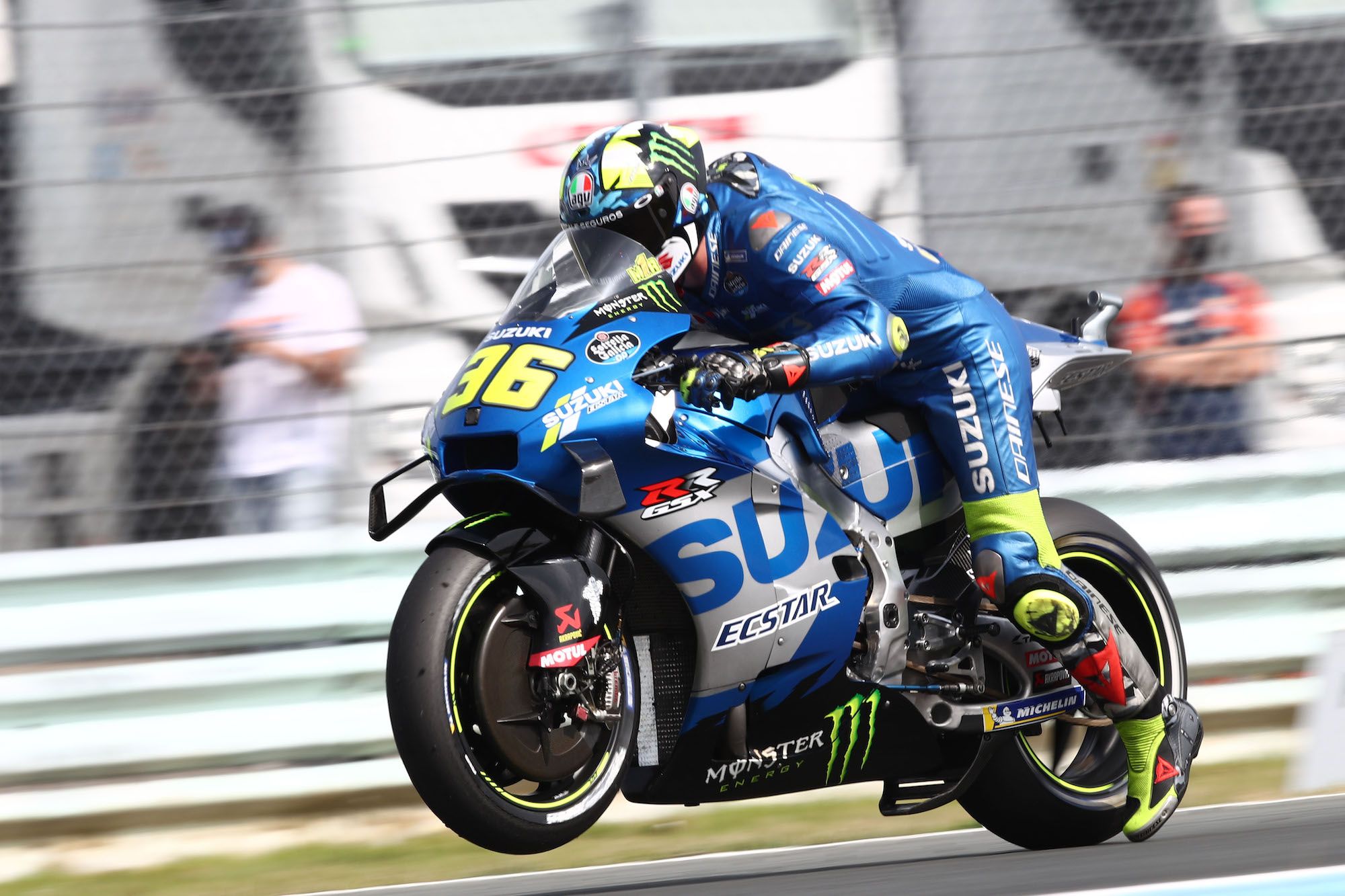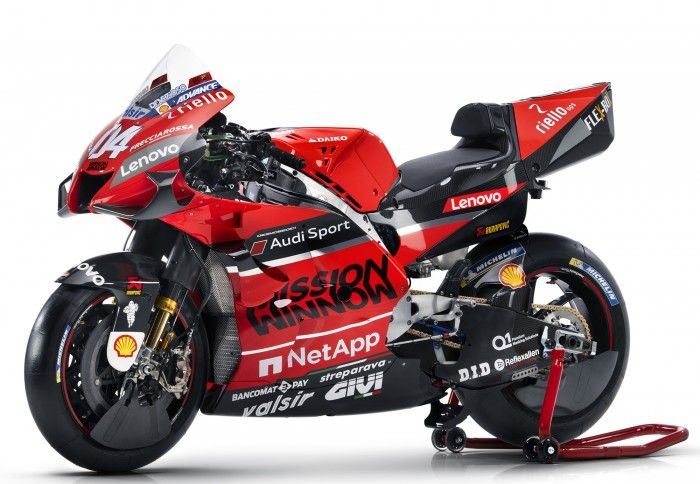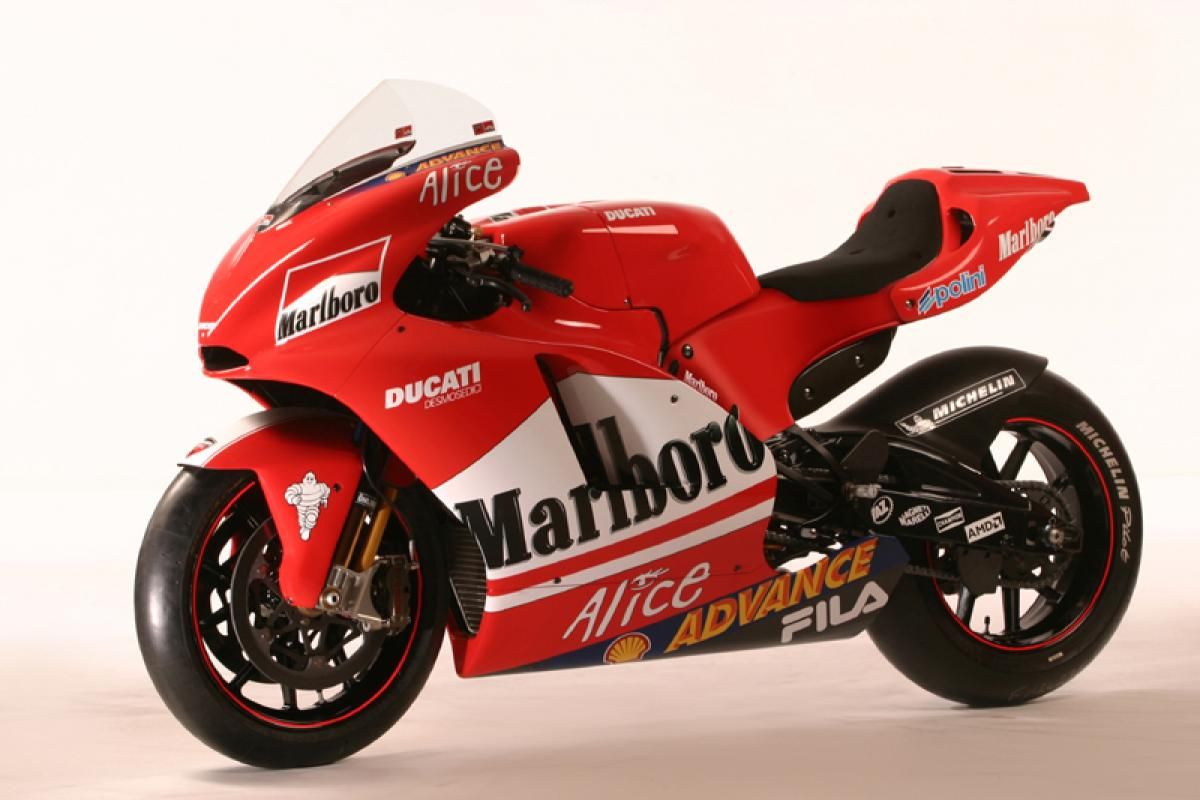In the eternal quest for racing glory, manufacturers are developing ever-more ingenious technology to make the bikes faster. But insiders are worried that speeds are getting too high and something needs to be done to curb the progress.
Are MotoGP Bikes Getting Too Fast?
Speed is the holy grail of racing motorcycle engineers, both in the corners and in a straight line. You might think that going fast in a straight line is easy: more power equals more speed. But it's not as simple as that.
Applying too much power exiting a corner lifts the front wheel, which in turn causes the bike's electronics to cut power momentarily, robbing the bike of acceleration. Aerodynamic appendages mounted on the fairing at the front of the bike helps counter this lift but the real break-through came courtesy of Ducati.
It was called the 'hole-shot device' and it mechanically lowers the rear of the bike when the rider is sitting on the grid. When the lights go out for the start of the race, the lowered rear suspension not only gives more traction but also counters the tendency for the front wheel to lift under acceleration, allowing a much quicker getaway.
Then Ducati took it one step further and gave the riders the ability to use the device throughout the whole lap, especially on exiting corners, giving the same benefits. Rivals had no option but to copy the technology if they were to keep up with the Ducatis.
Now, Ducati has taken another forward step and fitted the same lowering mechanism to the front suspension as well, allowing the whole bike to hunker down, giving even more acceleration benefits through even greater traction out of corners.
However, with the prospect of top speed records being broken, there are growing concerns that the bikes are getting simply too fast for safety. The current top speed record stands at 225mph (362.4kmh), credited to Johan Zarco on - you guessed it - a Ducati.
Suzuki boos Shinchi Sahara is the loudest voice raising concerns that speeds are getting to high, not to mention the added cost of developing systems just to try and keep up with the rest.
"I know some manufacturers are trying to use this during their running, on the front,” Sahara said. “Okay, if it becomes common technology to be competitive, okay we have to try this and have to use this.
“But this force us to have more extra budget, to develop it. Also I don’t know if this is a good way for us to have more speed on the straight, in terms of safety. So actually we have to discuss about this very carefully, I think."
This could be construed as sour grapes as the Suzuki, in the hands of Mir and Rins, has suffered in terms of top speed, even if it is acknowledged to be the best handling bike on the grid.
“Our system currently works only for the start. So during the race or the run on track, that system doesn't work for us.
“We understand how to make the system, we also know the method to develop it, but we are not really thinking to use this system at least for this year.”
So Suzuki is in favour of the technology for race starts but not for use throughout the race and it is hard to find fault with his reasoning. Top speed is not the problem per se, but the faster the bikes are on the straight, the more strain is put on brakes and tyres when it comes time to slow down, not to mention the thought that run-off areas might be rendered too small.
It's a problem that won't be easy to fix. Artificially limiting top speed would unfairly penalise those manufacturers who have got their sums right and have gained an advantage but allowing speeds to rise unhindered could lead to some really nasty accidents.
MotoGP is thrilling and exciting enough without an endless quest for more speed and safety has to be a major consideration. The MotoGP ruling body will have its work cut out to find a solution that is acceptable to everyone.

